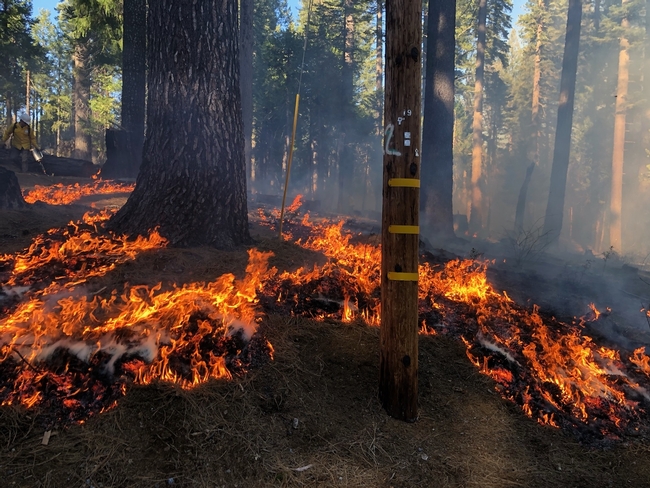To reduce wildfire risk, forestland owners can do winter controlled burns, says UCCE expert
When conditions are right, winter can be a good time to conduct prescribed burns for forest management, says Rob York, UC Cooperative Extension forestry specialist.
“A huge issue we have in California is fire severity. We know from research that prescribed fire can be a very good tool for reducing fire severity,” York said. “For forest landowners or foresters who want to do their own prescribed burning, winter burning can be a good entry point.”
York is based at the UC Blodgett Forest Research Station in Georgetown, where he developed a series of eight short videos demonstrating how fire can be used on landscapes during the colder months. The videos feature controlled fires conducted at the station on Dec. 6 and 9, 2020. More videos in this series will be posted during the upcoming year.
Among the factors covered in the videos are climatic conditions and site selection for winter burning.
Climatic conditions
Wet or snowy weather in the fall may seem to shut the window for prescribed burning, but York said often the snow melts away and fuels dry out enough to do a winter burn.
“The idea is to be ready when the fuels dry out,” he said. Thinning trees and masticating underbrush are ways to prepare the forest for a burn.
When selecting the day of the fire, relative humidity, temperature and wind speed and direction are important considerations.
“Relative humidity should be low. You want the cloud cover to be very low. A sunny day helps dry out the fuel,” York said. “In the winter, you want that drying and heating power of the sun to help the fuel be consumed.”
Site selection
Among the factors to consider in selecting locations for winter burns is the aspect. The sun's warmth is optimized on south-facing slopes.
“That's what we're looking for,” York said. “Relatively small areas that are burnable.”
An open canopy allows sunlight to dry out the understory vegetation and surface fuels, enabling successful winter burns.
Vegetation type also weighs into winter burning decisions.
“Bear clover plus pine needles make this feasible, including conditions on the wetter side when you might not otherwise be able to burn, you can burn,” York said. “If you can encourage bear clover and pine needles, you can encourage more opportunities for low density burns, which I think do a great job to maintain low fire hazard.”
Find the complete series on the UC Forestry and Range YouTube channel (https://www.youtube.com/user/UCExtensionForestry) in the playlist titled Winter Prescribed Burning.
UC Agriculture and Natural Resources brings the power of UC to all 58 counties. Through research and Cooperative Extension in agriculture, natural resources, nutrition, economic and youth development, our mission is to improve the lives of all Californians. Learn more at ucanr.edu.


